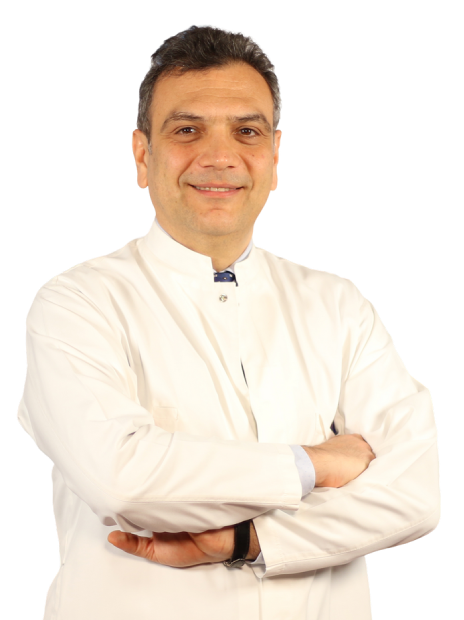What is Pediatric Cardiovascular Surgery?
Which children need pediatric cardiovascular surgery?
It is usually for kids with serious heart problems that affect their oxygen, growth, feeding, or energy. Signs can include fast breathing, blue lips or skin, fainting during activity, chest pain, or trouble gaining weight. Some babies need surgery right away, while others can wait until they are stronger. Doctors use heart tests and scans to understand the problem and choose the safest time and best plan for each child.
Parents often want to know about long term results. Pediatric heart surgery can help children get more oxygen, feel less tired, grow better, and join in daily activities and play. Many kids can exercise more, need fewer hospital visits, and enjoy a better quality of life. Every child is different, but new advances mean most children do very well.
Regular checkups, medicine if needed, and family education help keep these improvements. At Liv Hospital, we also give advice on nutrition, activity, and clear goals to help your child make steady progress.
Types of pediatric cardiovascular surgery

Septal defect repair: Closing atrial or ventricular septal defects to stop abnormal blood flow between heart chambers and improve oxygen delivery.
Valve repair or replacement: Restoring valve function when valves are too narrow (stenosis) or too leaky (regurgitation). Repair is often preferred in children to support growth, with replacement considered when repair is not feasible.
Outflow tract reconstruction: Addressing obstructions that limit blood flow from the heart to the lungs or the body, improving circulation and energy levels.
Arterial switch or complex reconstructions: Used for certain transposition or complex congenital conditions to restore more normal heart anatomy and blood flow.
Staged operations for single ventricle physiology: Planned procedures over time to optimize circulation and support development, with careful monitorinStaged operations for single ventricle physiology: These are planned surgeries done over time to improve blood flow and support your child’s growth, with close monitoring at each step.
There is no one size fits all procedure. The team chooses the safest and most effective option by looking at scans, your child’s age, growth, feeding, energy, and overall health. At Liv Hospital, we explain why we recommend a certain plan and what you can expect. In pediatric cardiovascular surgery, teams take extra steps to limit risks through precise planning and careful monitoring before, during, and after the operation. Families receive guidance on incision care, activity progression, medications, and warning signs after discharge.
Regular follow up visits help identify issues early and support a smooth recovery. At Liv Hospital, enhanced recovery pathways focus on child friendly anesthesia, age and size tailored pain control, and early mobilization when appropriate to support comfort and healing.
Pediatric Cardiovascular Surgery : Life after surgery
When to seek evaluation ?

Pediatric Cardiovascular Surgery Service: Evaluation, Preparation, and Aftercare. The pediatric cardiovascular surgery service at Liv Hospital guides families through a structured care pathway:
• Comprehensive assessment: Medical history, echocardiography, electrocardiograms, and advanced imaging to understand the child’s anatomy and circulation.
• Surgery with enhanced recovery: Child focused anesthesia, meticulous surgical technique, and monitoring tailored to age and condition. Pain control plans prioritize comfort and safe mobility.
• Postoperative care: Pediatric ICU support when needed, gradual transition to regular care, and clear discharge instructions. Families learn incision care, symptom monitoring, and when to call for help.
• Structured follow up: Regular checkups help track healing, growth, and energy, adjust medicines if needed, and give ongoing advice about nutrition and activity. This team approach helps children recover well and get back to daily life with more energy and confidence.
Pediatric Cardiology and Pediatric Cardiovascular Surgery: How Teams Support Families ?
Pediatric cardiology and cardiovascular surgery work together to deliver safe, effective care.
Collaboration includes:
• Shared decision making: Explaining options and expected outcomes in straightforward terms.
• Timing and readiness: Scheduling surgery when benefits are maximized and risks minimized.
• Monitoring and adjustment: Using imaging and exams to track progress and refine care plans.
• Family education: Providing practical tools for feeding, activity, and symptom recognition.
• Long term follow up: We help keep your child’s heart healthy as they grow and become more active. At Liv Hospital, our team approach makes sure families feel supported, informed, and confident from the first visit through all follow up care.
Pediatric Cardiovascular Surgery: Risks, Recovery, and Long Term Follow Up Understanding risks
Families value clarity on risks and how they are managed. Common risks include bleeding, infection, blood clots, rhythm issues, fluid build up, and scarring. The team reduces risk by:
• Detailed preoperative planning and imaging.
• Child specific anesthesia and monitoring.
• Strict infection prevention practices.
• Early detection and treatment of rhythm disturbances.
• Clear instructions for home care and follow up.
Recovery roadmap . Recovery involves phases:
• In hospital: Monitoring, pain control, fluid management, and early mobilization when appropriate.
• Early home phase: Rest, incision care, nutrition support, medication schedules, and gentle activity with safety guidance.
• Gradual return: Increasing activity levels, school participation, and play under guidance. Follow up visits verify healing, oxygenation, and energy.
• Long term health: Regular checkups, healthy habits, dental care, and sports advice are all tailored to your child’s needs and age. At Liv Hospital, we give families written plans and coaching to help you feel confident at every stage.
Long term follow up: Children do best with regular checkups to watch their heart function, growth, and activity levels. Some need more surgeries over time, while others just need routine visits. Families get practical tips on healthy habits, spotting symptoms, and knowing when to get help. The goal is lasting health, a strong heart, and full participation in daily life.
For more information about our academic and training initiatives, visit Liv Hospital Academy
Frequently Asked Questions for Pediatric Cardiovascular Surgery
How do I book an appointment?
Families can contact Liv Hospital to schedule a consultation or request a second opinion. Coordinated scheduling and telehealth options may be available when appropriate. If urgent symptoms occur, seek emergency care immediately.
Can my child play sports after surgery?
Many children return to age-appropriate activities over time. The team will provide individualized guidance based on the procedure, healing, and overall heart function.
What should I watch for at home after surgery?
Call for help if there is fever, increased swelling, redness, drainage from the incision, breathing changes, fainting, or unusual fatigue. Clear, written instructions explain when to contact the care team.
How do I prepare my child for surgery?
Preparation includes attending preoperative visits, following fasting and medication instructions, arranging transportation and support, and discussing the plan with your child using age-appropriate language. Written checklists help reduce stress.
How long is the recovery?
Recovery varies by procedure and child. Most children gradually return to normal activities. Families receive guidance on activity goals, nutrition, medications, and checkups to support a safe, comfortable recovery.
What are the risks?
Risks include bleeding, infection, blood clots, rhythm disturbances, fluid accumulation, and wound-healing issues. Teams use child-specific protocols to reduce risks and provide clear instructions for recovery at home.
What are the main types of surgery?
Common procedures include septal defect repair, valve repair or replacement, outflow tract reconstruction, complex reconstructions for transposition and related conditions, and staged operations for single-ventricle physiology.
Is pediatric cardiovascular surgery a quick fix?
No. It is a powerful medical tool within a comprehensive care program. Success depends on careful planning, skilled surgery, follow-up visits, medications when needed, and healthy routines at home.

